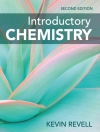Practical approaches to ensure that analytical methods and instruments meet GMP standards and requirements
Complementing the authors’ first book, Analytical Method Validation and Instrument Performance Verification, this new volume provides coverage of more advanced topics, focusing on additional and supplemental methods, instruments, and electronic systems that are used in pharmaceutical, biopharmaceutical, and clinical testing. Readers will gain new and valuable insights that enable them to avoid common pitfalls in order to seamlessly conduct analytical method validation as well as instrument operation qualification and performance verification.
* Part 1, Method Validation, begins with an overview of the book’s risk-based approach to phase appropriate validation and instrument qualification; it then focuses on the strategies and requirements for early phase drug development, including validation of specific techniques and functions such as process analytical technology, cleaning validation, and validation of laboratory information management systems
* Part 2, Instrument Performance Verification, explores the underlying principles and techniques for verifying instrument performance–coverage includes analytical instruments that are increasingly important to the pharmaceutical industry, such as NIR spectrometers and particle size analyzers–and offers readers a variety of alternative approaches for the successful verification of instrument performance based on the needs of their labs
At the end of each chapter, the authors examine important practical problems and share their solutions. All the methods covered in this book follow Good Analytical Practices (GAP) to ensure that reliable data are generated in compliance with current Good Manufacturing Practices (c GMP).
Analysts, scientists, engineers, technologists, and technical managers should turn to this book to ensure that analytical methods and instruments are accurate and meet GMP standards and requirements.
Innehållsförteckning
Chapter 1 Overview of Risk Based Approach to Phase Appropriate
Validation and Instrument Qualification.
Chapter 2 Phase Appropriate Method Validation.
Chapter 3 Analytical Method Verification, Method Revalidation,
and Method Transfer.
Chapter 4 Validation of PAT Applications.
Chapter 5 The Validation of Near Infrared Systems for Raw
Material Identification.
Chapter 6 Cleaning Validation.
Chapter 7 Risk Based Validation of laboratory Information
Management Systems (LIMS).
Chapter 8 Performance Qualification and Verification of
Balance.
Chapter 9 Performance Verification of NIR
Spectrophotometers.
Chapter 10 Operational Qualification in Practice for Gas
Chromatography Instruments.
Chapter 11 Performance Verification on RI, Fluorescence,
Evaporative Light Scattering Detection.
Chapter 12 Instrument Qualification and Performance Verification
for Particle Size Instruments.
Chapter 13 Method Validation, Qualification, and Performance
Verification for Total Organic Carbon (TOC) Analyzers.
Chapter 14 Instrument Performance Verification – Micro
Pipettes.
Chapter 15 Instrument Qualification and Performance Verification
for Automated Liquid Handling Systems.
Chapter 16 Performance Qualification and Verification in Powder
X-ray Diffraction.
Om författaren
CHUNG CHOW CHAN, Ph D, is a Consultant for CCC Consulting, and the former president of the Calibration & Validation Group, a nonprofit organization dedicated to the art and science of instrument calibration and method validation.
HERMAN LAM, Ph D, is the Principal of Wild Crane Horizon and President of the Calibration & Validation Group. Dr. Lam has developed and presented an instrument qualification and performance verification course for Agilent Technologies and other organizations in North America and Asia.
XUE MING ZHANG, Ph D, is a Manager at Apotex, responsible for overseeing the development of stable liquid formulations. He also works on method development and validation for both instrument and chemical analysis.












